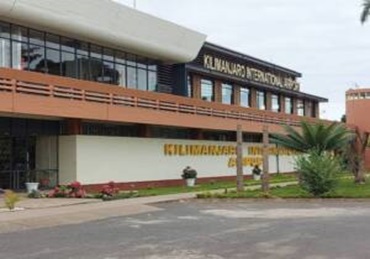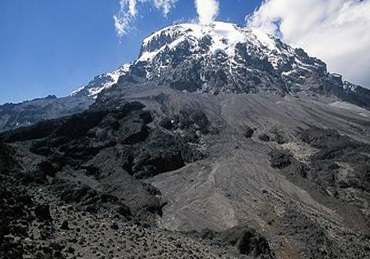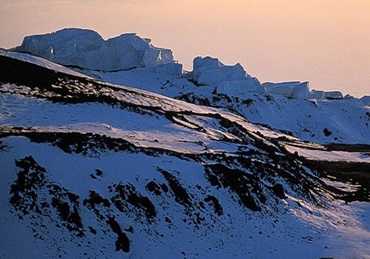6 Days Rongai Route
Your Best Choice
-
Duration
6 Days
-
Min Age
10 +
-
Tour Type
Adventure
-
Kilimanjaro
Book Now!
-
Posted 2 days ago
-
5.0 Reviews
The 6 Days Rongai Route offers an exceptional adventure to those seeking to summit Mount Kilimanjaro. Known for its serene and less crowded trails, this route presents an opportunity to experience diverse landscapes, from lush forests to alpine deserts, all while enjoying panoramic views and a gradual, manageable ascent.
Overview of the Rongai Route
The Rongai Route is one of the lesser-known paths up Mount Kilimanjaro, starting from the northern side near the Kenyan border. It is the only route that approaches Kilimanjaro from the north, providing trekkers with a unique perspective of the mountain. This route is favored for its scenic beauty, low foot traffic, and its gentle gradient, which makes it ideal for climbers looking for a more relaxed trek.
Why Choose the Rongai Route?
Choosing the Rongai Route means opting for a quieter, more tranquil trek compared to the more popular routes. This path offers trekkers the chance to enjoy the unspoiled wilderness, observe wildlife in the lower forests, and relish the striking views of the summit from the north. Additionally, the gradual incline of this route allows for better acclimatization and a higher success rate in reaching the summit.
Rongai Route is its high success rate of around 85% for trekkers completing the six-day itinerary. Although it is more challenging than other routes due to its steep sections, including the Barranco Wall, it does not require technical climbing skills. This makes it a great choice for adventurous hikers looking for a rewarding and scenic trek. With a balance of challenge, beauty, and a good acclimatization profile, the Rongai Route is considered one of the best ways to experience Kilimanjaro and achieve a successful summit.
Day-by-Day Itinerary for the 6 Days Rongai Route
Day 0 Arrival and Preparation
On the day before the trek, trekkers typically arrive in Moshi or Arusha. This day is crucial for final preparations, including gear checks, meeting the guide team, and ensuring all necessary permits and logistics are in order. Trekkers also get a chance to rest and acclimate to the altitude before the adventure begins.

Day 1: Rongai Gate to Simba Camp
The trek officially starts with a drive to Rongai Gate. After registration, the journey begins with a gentle hike through farmlands and pine forests. The route offers a gradual introduction to the trek with a chance to spot local wildlife. The day ends at Simba Camp, where trekkers settle in for their first night on the mountain.
- Distance: 7 km / 5 mi
- Hiking Time: 3-4 hours
- Habitat: Rainforest
- Elevation: 1997 m / 6552 ft to 2635 m / 8645 ft
- Altitude Gain: 638 m
- Meals: Lunch, and Dinner
Day 2 Simba Camp to Second Cave Camp
After a good night’s sleep and a hearty breakfast, the trek continues along a consistent ascending path through moorland terrain. You will catch terrific views of Kibo and your first glimpse of the ice fields on the Eastern crater rim. As you approach Second Cave, the small shrubs of the moorland become thinner, and temperatures begin to drop.
- Distance: 5.8 km / 3.6 mi
- Hiking Time: 5-6 hours
- Habitat: Moorland
- Elevation: 2635 m / 8645 ft to 3487 m / 11,440 ft
- Altitude Gain: 852 m
- Meals: Breakfast, Lunch, and Dinner
Day 3 Second Cave Camp to Third Cave Camp
After breakfast, continue the steady ascent into the semi-desert terrain. This relatively short hiking day brings you closer to the Eastern ice fields, continually drawing attention to their beauty. It’s important to monitor your body and inform your guide of any signs of altitude sickness.
- Distance: 3.3 km / 2 mi
- Hiking Time: 3-4 hours
- Habitat: Semi-Desert
- Elevation: 3487 m / 11,440 ft to 3936 m / 12,913 ft
- Altitude Gain: 449 m
- Meals: Breakfast, Lunch, and Dinner
Day 4 Third Cave Camp to Kibo Huts
Departing early, the trek transitions from semi-desert to Alpine Desert terrain. The day’s hike will take you just below the Kibo crater wall to the Kibo Huts. At this point, you will merge with the Marangu Route, which you will use to hike to the summit. Prepare your clothing and equipment for the summit attempt, rest, and sleep early.
- Distance: 6.7 km / 4.2 mi
- Hiking Time: 4-5 hours
- Habitat: Alpine Desert
- Elevation: 3936 m / 12,913 ft to 5174 m / 16,975 ft
- Altitude Gain: 1238 m
- Meals: Breakfast, Lunch, and Dinner
Day 5 Kibo Huts to Summit to Horombo Huts
Excitement builds as the summit attempt begins between midnight and 2 a.m. This is the most challenging part of the trek, both mentally and physically. Ascend through heavy scree towards Stella Point on the crater rim, then continue to Uhuru Peak, Africa’s highest point. After celebrating at the summit, descend to Kibo Hut for lunch before continuing down to Horombo Hut for the night.
- Distance: 4 km / 2.5 mi up, 15.75 km / 9.8 mi down
- Hiking Time: 5-7 hours up, 5-6 hours down
- Habitat: Glaciers, Snow-Capped Summit
- Elevation Gain: 5174 m / 16,975 ft to 5895 m / 19,341 ft
- Altitude Gain: 721 m
- Descent to: 3721 m / 12,208 ft
- Altitude Lost: 2174 m
- Meals: Breakfast, Lunch, and Dinner
Day 6 Horombo Huts to Marangu Gate to Moshi
After breakfast, a heartfelt ceremony of appreciation and team bonding takes place before saying goodbye. Continue the descent, stopping at Mandara Huts for lunch. Upon reaching Marangu Gate, receive your summit certificates and celebrate your achievement. A vehicle will drive you back to your hotel in Moshi for a well-deserved hot shower, dinner, and celebration.
- Distance: 20 km / 12.5 mi
- Hiking Time: 6-7 hours
- Habitat: Rainforest
- Elevation Descent: 3721 m / 12,208 ft to 1905 m / 6250 ft
- Altitude Lost: 1816 m
- Meals: Breakfast, and Lunch
Included/Exclude
-
All Park Fees, Camping Fees
-
Season mountain tents with sleeping mats
-
Transportation to & from the mountain gate
-
Professional mountain guides & cooks and porters
-
Crew Wages
-
Breakfasts, Lunches, Dinners and Drinking water
-
Supplemental Oxygen & Pulse Oximeter
-
Flights, Visa and Travel Insurance
-
Tipping the crew
-
Personal Climbing Gears
-
Laundry Services
Difficulty Level & Acclimatization Strategy
The Rongai Route is considered a moderate to difficult trek due to its steep sections, long hiking days, and high altitude. Unlike the Marangu Route, which has a gradual ascent, Machame involves steep climbs, rocky paths, and the challenging Barranco Wall, requiring good physical fitness and endurance. The most demanding part of the trek is summit night, where climbers ascend over 1,200 meters (3,937 feet) in freezing temperatures and low oxygen levels.
To improve acclimatization and success rates, the Rongai Route follows the "climb high, sleep low" strategy, where trekkers ascend to higher elevations during the day but descend to lower camps for the night. A key acclimatization point is Lava Tower (4,630m) on Day 3, which helps the body adjust to lower oxygen levels. Drinking plenty of water, maintaining a slow and steady pace (“pole pole” in Swahili), and allowing the body time to adapt are crucial for preventing altitude sickness and increasing the chances of a successful summit.
Best Time to Climb Kilimanjaro via Rongai Route
The best time to climb Kilimanjaro via the Rongai Route is during the dry seasons, which occur from January to early March and June to October. These months offer stable weather, clear skies, and excellent trekking conditions, making it easier to navigate the trail and enjoy breathtaking views. The January–March period is generally colder with a higher chance of snow at the summit, providing a unique and less crowded experience. The June–October season is the most popular due to warmer temperatures and minimal rainfall. While it is possible to climb Kilimanjaro year-round, the rainy seasons (April–May and November–December) bring slippery trails, reduced visibility, and more challenging conditions, making them less ideal for trekking.
Frequently Asked Questions (FAQs) – 6 Days Rongai Route
The Rongai Route is considered a moderate to difficult trek due to its steep sections, long trekking days, and high altitude. While no technical climbing skills are required, hikers must be prepared for challenging ascents, including the Barranco Wall and the final summit push. Good physical fitness, mental determination, and prior hiking experience can help make the climb more manageable.
The 6-day Rongai Route has an estimated success rate of around 85%, making it one of the best routes for reaching the summit. This is due to its well-planned acclimatization profile, which follows the "climb high, sleep low" principle. Choosing the 7-day Rongai Route increases the success rate even further by providing an extra day for better acclimatization.
No prior trekking experience is required to climb Kilimanjaro via the Rongai Route , but good physical fitness is highly recommended. Since the trek involves multiple days of hiking at high altitudes, training at least two months before the climb with activities such as hiking, running, cardio workouts, and leg-strengthening exercises will improve endurance and overall performance on the mountain.
The best time to climb Kilimanjaro via the Rongai Route is during the dry seasons, which are January to early March and June to October. These months offer stable weather, clearer skies, and better trekking conditions. The January–March period is cooler, with a higher chance of snow at the summit, making it ideal for those seeking a less crowded experience. The June–October season is the most popular, with warmer temperatures and minimal rainfall. The rainy seasons (April–May and November–December) make the trek more challenging due to muddy trails and poor visibility.
The total distance of the Rongai Route is approximately 62 km (37 miles) from Machame Gate to Uhuru Peak and down to Mweka Gate. The daily trekking distances vary, with the longest and most challenging section being summit night, covering about 17 km from Barafu Camp to Uhuru Peak and down to Mweka Camp.
The Rongai Route is a camping-only route, meaning climbers sleep in tents set up at designated campsites. Unlike the Marangu Route, which has hut accommodations, Machame requires trekkers to bring or rent camping gear, including sleeping bags and sleeping mats. Porters carry and set up the tents, and meals are prepared by a cook at each campsite.
A major advantage of the Rongai Route is its excellent acclimatization profile. One of the most important acclimatization points is Lava Tower (4,630m) on Day 3, where trekkers ascend to a high elevation before descending to Barranco Camp (3,960m) to sleep. This follows the "climb high, sleep low" principle, which helps the body adjust to the high altitude and reduces the risk of altitude sickness.
Summit night is the most challenging part of the Rongai Route . The ascent begins around midnight from Barafu Camp (4,640m), with temperatures dropping well below freezing. The climb is steep, slow, and mentally demanding due to thin air, strong winds, and fatigue. It takes about 6–8 hours to reach Uhuru Peak (5,895m), the highest point in Africa. After sunrise at the summit, climbers descend back to Mweka Camp (3,100m) for a much-needed rest.
Climbers need essential gear, including warm clothing layers, a waterproof jacket, thermal wear, gloves, and a headlamp for summit night. Hiking boots with strong ankle support and trekking poles help with stability on steep sections. A four-season sleeping bag rated for -10°C to -20°C, sunglasses, and a hydration system are also necessary for a safe and comfortable trek.
The cost of climbing Kilimanjaro via the Rongai Route ranges from $1,500 to $3,500 per person, depending on group size, and level of service. The price typically includes park fees, guide and porter wages, meals, camping equipment, and transportation. Budget or Group Joining offer lower prices, but it’s important to choose Hill Trust Tour and Safari that follows ethical porter treatment and safety standards.





